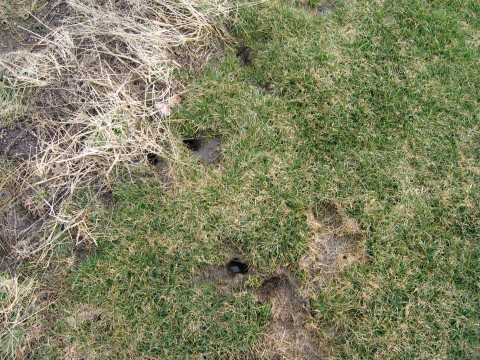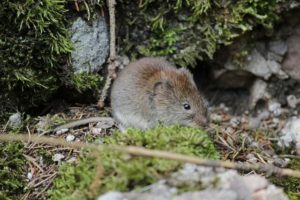Handling Vole Damage: Effective Control Strategies
Handling Vole Damage: Effective Control Strategies
Blog Article
Comprehensive Overview to Reliable Vole Parasite Control: Infestation Identification and Therapy Approaches
In the realm of efficient parasite control, vole invasions posture a special obstacle that requires a strategic technique. These small rodents, commonly mistaken for mice, can damage gardens, yards, and plants if left untreated. Determining the indications of vole visibility and applying targeted therapy techniques are vital elements of a successful pest monitoring plan. By discovering the nuances of vole actions, comprehending essential indicators of invasion, and reviewing a series of control alternatives, one can develop a thorough approach to combat these elusive parasites.
Understanding Vole Habits
Vole habits is defined by their delving habits and fast reproduction rates, making them a tough bug to regulate properly. These tiny rodents normally develop intricate tunnel systems underground, utilizing them for sanctuary, food storage, and transportation. Voles are herbivores, taking in a range of plants, roots, grasses, and light bulbs, which can cause significant damage to yards, orchards, and grass. Their rapid reproductive price further complicates control initiatives, with ladies efficient in generating numerous clutters in a solitary year, each having several offspring.
Voles are most active during the morning and evening hours, investing the bulk of their time foraging for food. Their burrowing behaviors not only disrupt yards and yards however also make them challenging to detect and get rid of. Recognizing vole habits is important for efficient insect control methods. By determining their burrow locations, keeping track of feeding areas, and implementing targeted control techniques, such as capturing or habitat modification, vole invasions can be taken care of effectively.
Signs of Vole Infestation

Avoidance Approaches
Executing effective prevention techniques is crucial in reducing vole invasions and safeguarding plant life from their harmful feeding routines (vole lawn damage). To stop vole infestations, it is necessary to start by removing prospective food resources and sanctuary. Keep yard and greenery trimmed short, eliminate weeds and debris, and maintain a tidy yard or yard to make the area much less eye-catching to voles. Installing obstacles such as hardware fabric or underground secure fencing can likewise assist hinder voles from entering specific areas. Furthermore, minimizing excess moisture by taking care of leaking pipes and making certain proper water drainage can make the environment less congenial for voles.
Consistently checking the property for indicators of vole task, such as paths and burrow openings, is important for early detection and timely action. Think about making use of repellents or traps strategically positioned near their paths if vole useful site task is believed. Utilizing natural killers like serpents or owls can likewise help maintain vole resource populaces in check. By carrying out a mix of these avoidance homeowners, techniques and gardeners can efficiently secure their greenery from vole damages.
Non-Lethal Control Approaches
To efficiently manage vole populations while focusing on gentle techniques, non-lethal control strategies offer sensible remedies for minimizing vole damages in yards and landscapes. One efficient method is using physical obstacles such as equipment fabric or wire mesh to protect at risk plants. These obstacles can be hidden a minimum of 12 inches bent and deep at a 90-degree angle to stop voles from burrowing underneath. In addition, environment adjustment can discourage voles by minimizing their favored food resources and concealing places. Maintaining a well-mowed yard, eliminating debris, and maintaining greenery cut can make the environment much less enticing to voles.

Lethal Control Options
One effective technique for resolving vole invasions in gardens and landscapes includes the strategic usage of lethal control options. When confronted with an extreme vole infestation that non-lethal methods have actually fallen short to have, executing deadly control steps ends up being critical. One commonly used dangerous control choice is using snap traps. These catches are designed to swiftly and humanely kill voles upon activation, making them a popular choice for several garden enthusiasts check these guys out and landscapers. To raise the efficiency of breeze traps, it is suggested to position them in areas where vole task is high, such as along paths or near burrow entryways. One more lethal control choice is the use of hazardous lures especially developed to target voles. These baits consist of poison that is ingested by the voles, bring about their ultimate death. Nevertheless, caution has to be exercised when using poisonous baits to prevent damage to non-target animals or family pets. Generally, when utilizing dangerous control options, it is necessary to do so sensibly and based on local regulations to successfully take care of vole invasions.
Verdict
In verdict, efficient vole bug control needs a comprehensive understanding of vole actions, recognition of indications of problem, application of avoidance methods, and usage of both non-lethal and deadly control techniques. By combining these strategies, individuals can properly manage vole populations and secure their building from damages. It is essential to resolve vole infestations quickly to stop further issues and lessen the influence on the surrounding setting.
Given the intricate passage systems and fast recreation rates characteristic of voles, recognizing the signs of vole problem becomes important in efficient pest control. One of the main indications of vole existence is the visibility of surface area runways or tracks in lawn or snow, typically regarding 1-2 inches large, produced as voles take a trip in between their burrows and food resources.To properly handle vole populations while prioritizing gentle approaches, non-lethal control approaches supply sensible remedies for lowering vole damage in landscapes and gardens.One reliable approach for attending to vole invasions in gardens and landscapes involves the strategic usage of lethal control options. vole control.In verdict, reliable vole insect control requires a comprehensive understanding of vole behavior, identification of indications of problem, application of avoidance strategies, and usage of both lethal and non-lethal control techniques
Report this page